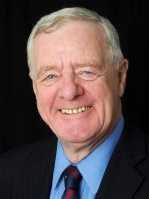Nyheter
David Hargreaves on Precious Metals, week 25 2014
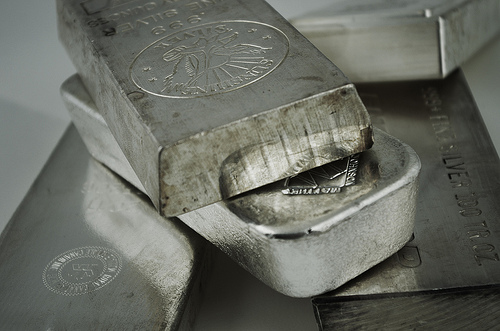
The upward leap in gold this week, over 3%, to top $1300/oz, was largely propelled by a furious trading session of over 80t in New York on Thursday and is attributed by some to short covering.
Why? Prior to the Iraq boilover and in spite of continued fighting in Syria, Libya and stations east, the consensus was for the gold price to drift down to $1050-1000. This encouraged the more adventuresome elements to go short. Came Iraq and the US hinting it might not raise interest rates right now and chaos set in. So up went gold. Will it go further? Maybe. How much further? If the short sellers have now been taken out, we have a level pitch.
WIM says: We stay by our $1200 base price for gold, the rest being the froth. There could be more of that, who knows?
Now what has it done for shares? Well, at first blush it has enhanced the majors because current price increases report to the bottom line, but not so the junior explorer-developers, because few believe this bubble. So?
The juniors were not so well treated. We saw:
Elsewhere, we saw more formative activity.
The London Gold Fix has had a kick in the pants and, with the imminent demise of the silver fix, will not be the same again. Arguably, modernisation was overdue. The WGC will host a forum on July 7 to look at reform. London’s Financial Conduct Authority (FCA) will attend as an observer. Included will be (if they show up) bullion banks, refiners, ETFs, Exchanges, central banks and mining companies.
The WGC is trying to take all this seriously, but in danger of drowning in platitudes. It speaks of the needs of all market participants, today’s requirements, transparency, liquidity and independent oversight. It sobers up by saying any solution should be based on five principles: executed trades, a tradeable price – not just a reference price, highly transparent, subject to audit and be calculated from a deep end liquid market.
WIM says: This has gone too far to use the adage “if it ain’t broke, don’t fix it”. The fix will have to evolve, but will it turn out to be a camel, ie a horse designed by a committee? This is too important a market with which to play football.
Platinum continues to centre on the South African miners’ strike, since that country continues to produce up to 80% of all world production of this key industry metal. Now since the major producers have been out of action for over 20 weeks (see Countries) we might have expected the price to fly. Not so. Whereas gold advanced $41 on the week, platinum only managed $15, thus the premium dropped from 1.13 to 1.11. The strike is approaching the bloody stage and the companies – Implats, Amplats and Lonmin – will not let go. Not helping the union (AMCU) cause is that platinum metal production increased by a seasonally adjusted 39% between March and April. Surface stocks would still appear adequate and recycling continues apace.
WIM says: Sorry, AMCU, it may be pie-eating time, the humble variety. One day the strike will have to be settled and the return to work will almost certainly trigger a fall in price. It will also exacerbate South Africa’s acute power supply problem.
Silver has again become fashionable amongst the fringe punter-analysts. Now, why? This column pointed out some time ago that whilst nobody knows just how much of the world’s oldest metal lies on surface, it is a lot. On a ratio of its 20:1 price to gold, we might say 3 million tonnes, enough to go around. One bit of excitement is that its time-honoured price mechanism, the London Silver Fix, is to be abandoned in August. Something will have to replace it. Several contenders are throwing their hats into the ring. Reuters, as reported by Mineweb, says there are three alternatives on offer. Shiver me timbers, you can only have two alternatives, but let’s plough on. One is the LME, then there is the Chicago Mercantile Exchange (CME) and the third is a ring-based solution. At least 10 companies will compete.
[hr]
About David Hargreaves
David Hargreaves is a mining engineer with over forty years of senior experience in the industry. After qualifying in coal mining he worked in the iron ore mines of Quebec and Northwest Ontario before diversifying into other bulk minerals including bauxite. He was Head of Research for stockbrokers James Capel in London from 1974 to 1977 and voted Mining Analyst of the year on three successive occasions.
Since forming his own metals broking and research company in 1977, he has successfully promoted and been a director of several public companies. He currently writes “The Week in Mining”, an incisive review of world mining events, for stockbrokers WH Ireland. David’s research pays particular attention to steel via the iron ore and coal supply industries. He is a Chartered Mining Engineer, Fellow of the Geological Society and the Institute of Mining, Minerals and Materials, and a Member of the Royal Institution. His textbook, “The World Index of Resources and Population” accurately predicted the exponential rise in demand for steel industry products.
Nyheter
Kinas elproduktion slog nytt rekord i augusti, vilket även kolkraft gjorde

Kinas officiella statistik för elproduktion har släppts för augusti och den visar att landet slog ett nytt rekord. Under augusti producerades 936 TWh elektricitet.
Stephen Stapczynski på Bloomberg lyfter fram att det är ungefär lika mycket som Japan producerar per år, vilket innebär är de producerar ungefär lika mycket elektricitet per invånare.
Kinas elproduktion kom i augusti från:
| Fossil energi | 67 % |
| Vattenkraft | 16 % |
| Vind och Sol | 13 % |
| Kärnkraft | 5 % |
Stapczynskis kollega Javier Blas uppmärksammar även att det totala rekordet inkluderade ett nytt rekord för kolkraft. Termisk energi (där nästan allting är kol) producerade 627,4 TWh under augusti. Vi rapporterade tidigare i år att Kina under första kvartalet slog ett nytt rekord i kolproduktion.
Nyheter
Det stigande guldpriset en utmaning för smyckesköpare
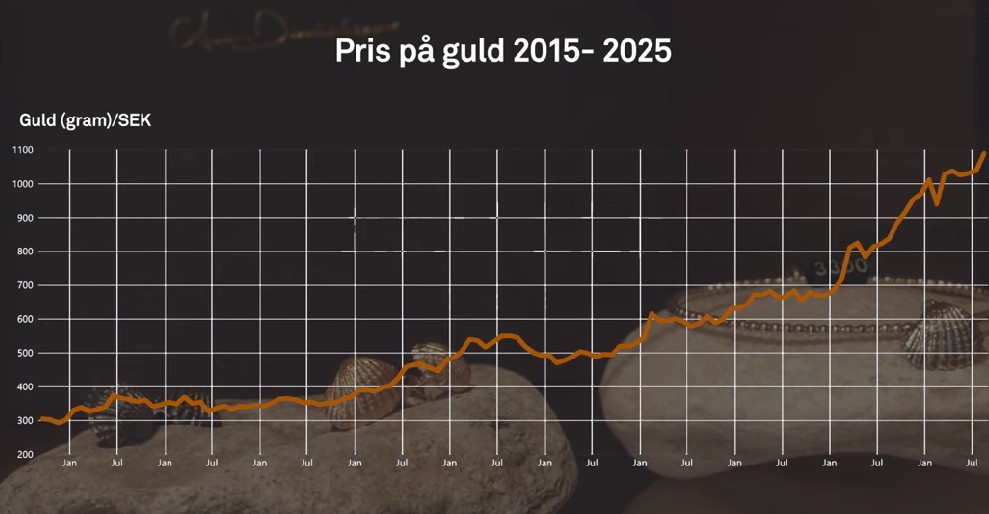
Guldpriset når hela tiden nya höjder och det märks för folk när de ska köpa smycken. Det gör att butikerna måste justera upp sina priser löpande och kunder funderar på om det går att välja något med lägre karat eller mindre diamant. Anna Danielsson, vd på Smyckevalvet, säger att det samtidigt gör att kunderna får upp ögonen för värdet av att äga guld. Det högre guldpriset har även gjort att gamla smycken som ligger hemma i folks byrålådor kan ha fått ett överraskande högt värde.
Nyheter
Aktier i guldbolag laggar priset på guld
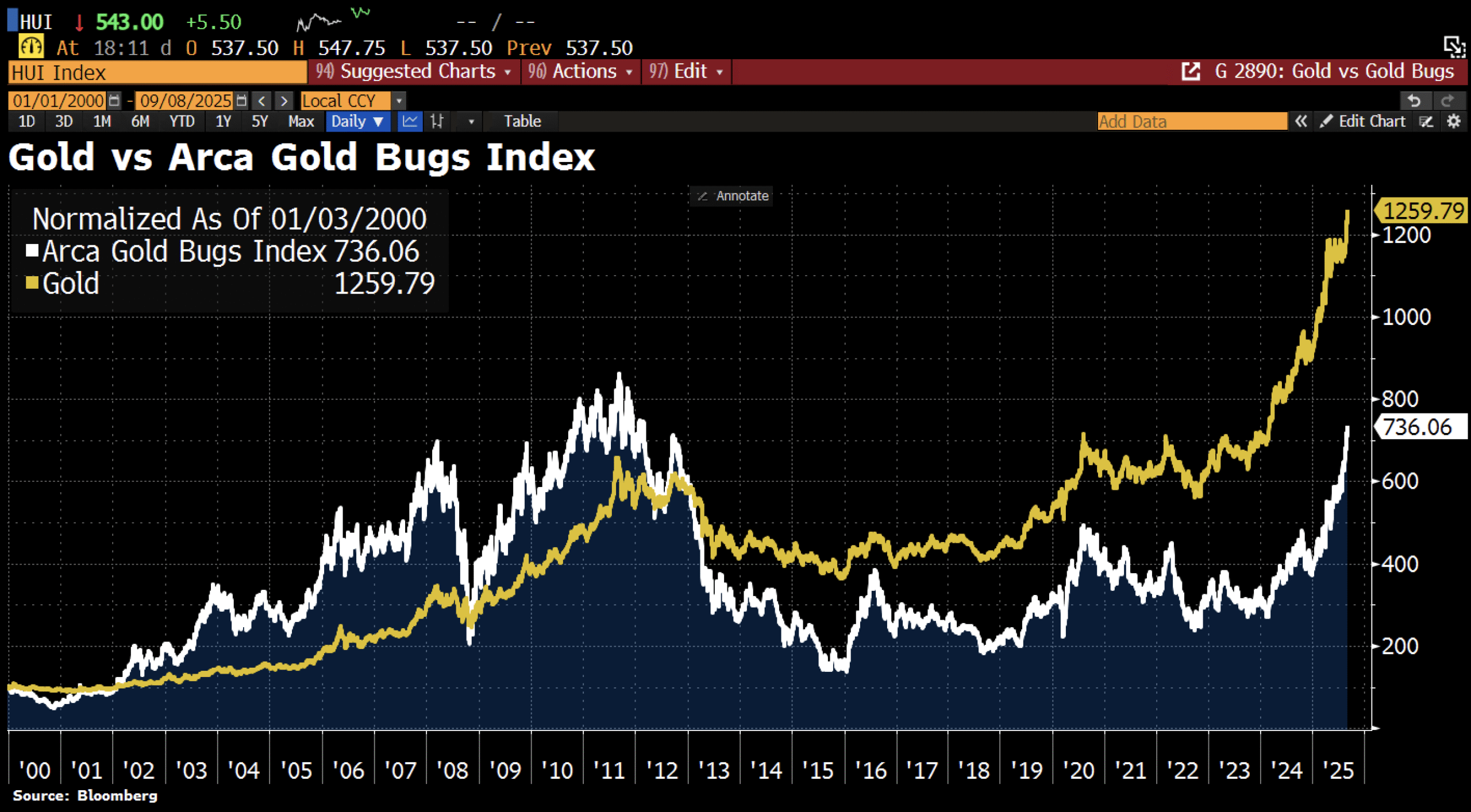
Sedan år 2013 har aktierna i bolag som producerar guld inte alls hängt med prisutvecklingen på guld. I takt med att guldpriset har stigit så har avståndet bara blivit större. Detta trots att riskaptiten på aktiemarknaden i stort är högt.
I diagrammet jämförs priset på guld med Arca Gold Bugs Index, där indexet består av flera av de största guldbolagen.
-

 Nyheter4 veckor sedan
Nyheter4 veckor sedanMeta bygger ett AI-datacenter på 5 GW och 2,25 GW gaskraftverk
-
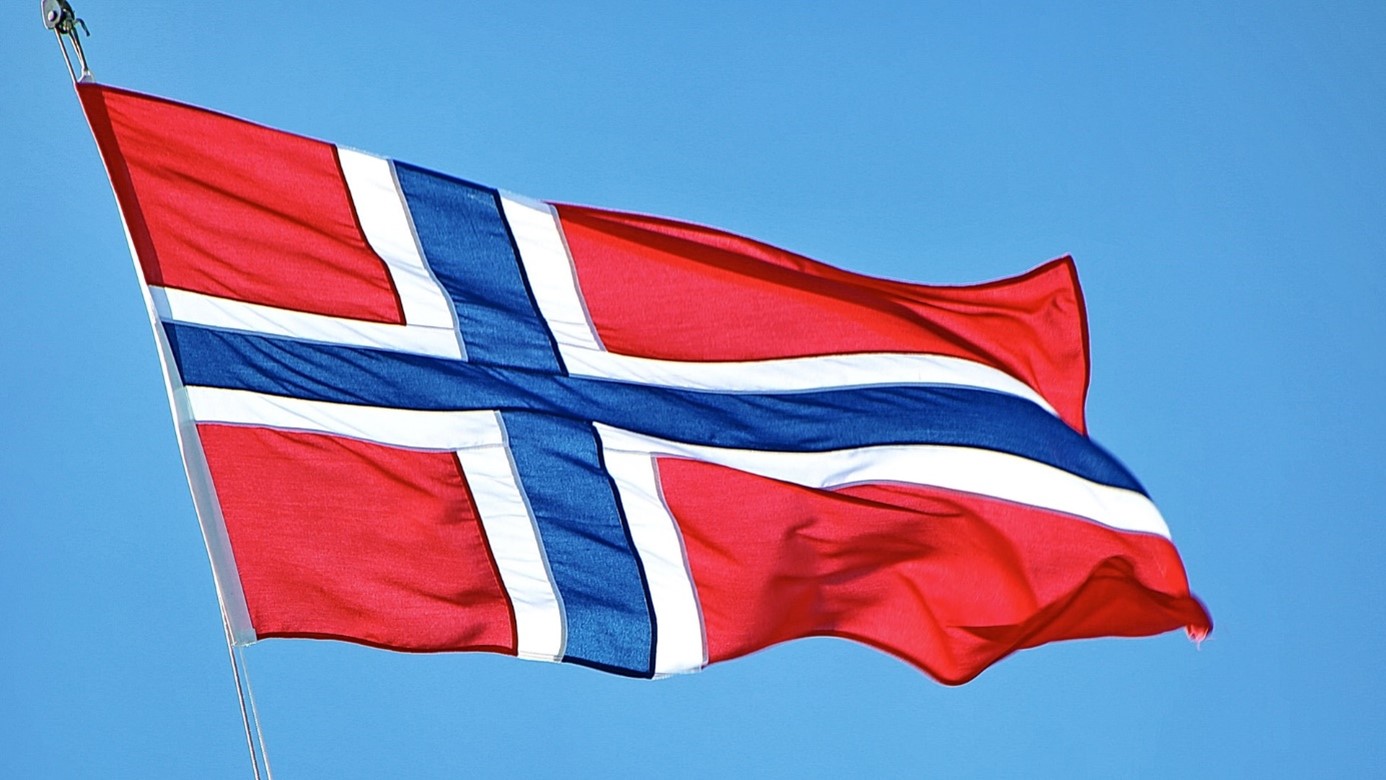
 Nyheter4 veckor sedan
Nyheter4 veckor sedanAker BP gör ett av Norges största oljefynd på ett decennium, stärker resurserna i Yggdrasilområdet
-

 Nyheter4 veckor sedan
Nyheter4 veckor sedanEtt samtal om koppar, kaffe och spannmål
-

 Analys4 veckor sedan
Analys4 veckor sedanBrent sideways on sanctions and peace talks
-

 Nyheter4 veckor sedan
Nyheter4 veckor sedanSommarens torka kan ge högre elpriser i höst
-

 Analys3 veckor sedan
Analys3 veckor sedanBrent edges higher as India–Russia oil trade draws U.S. ire and Powell takes the stage at Jackson Hole
-
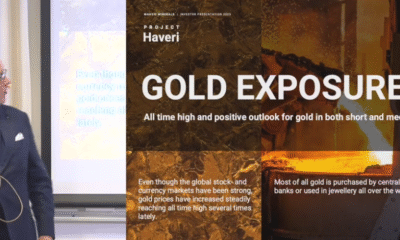
 Nyheter3 veckor sedan
Nyheter3 veckor sedanMahvie Minerals är verksamt i guldrikt område i Finland
-

 Analys3 veckor sedan
Analys3 veckor sedanIncreasing risk that OPEC+ will unwind the last 1.65 mb/d of cuts when they meet on 7 September




